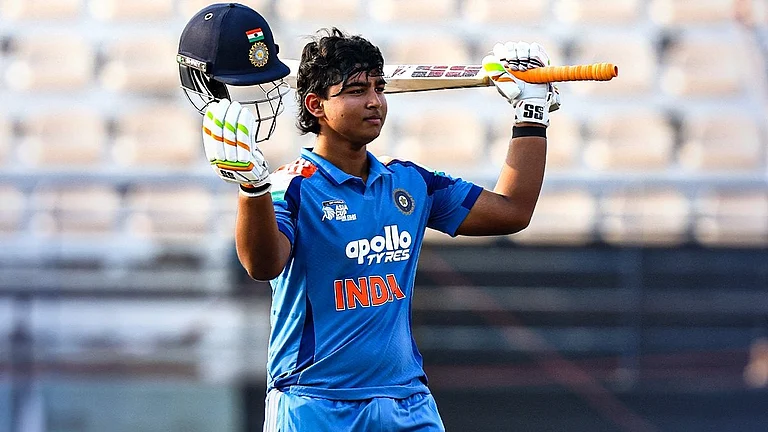Thousands of people sporting the Gandhi topi and chanting ‘Kejriwal Zindabad’ had gathered in front of the Aam Aadmi Party’s (AAP’s) Delhi office to celebrate the third consecutive victory of Arvind Kejriwal in 2020. There were no chants of Jai Shree Ram or Bajrang Bali. It was a celebration of development—of health, education, and infrastructure. Flanked by party leaders such as Raghav Chadda and Sanjay Singh, Kejriwal came in front of the audience amidst loud cheers. He attributed the victory to a “new form of politics” that the people of Delhi had showcased to the rest of the country.
So, what is this “new form of politics” all about? Is it a post-ideological formation where the politics of welfare and infrastructure rule over earlier forms of caste and kinship-based alliances that have so far dominated the political discourse of the country?
At a time when the anti-Citizenship Amendment Act (CAA) protests had gripped the country and Delhi became its epicentre with the fearless agitation of Muslim women in Shaheen Bagh, AAP tried to push a new narrative—a discourse of development. Political scientists note that this was the crucial moment when the AAP found an alternative turf to fight the prevalent communal politics. A nuanced reading of their manifesto makes it more clear.
As key Bharatiya Janata Party (BJP) leaders started casting aspersions on Kejriwal for then the Deputy CM Manish Sisodia’s support for the Shaheen Bagh movement, the party came out with a developmental manifesto. The 10 guarantees of AAP included promises of 24-hour electricity, piped drinking water to every household, Mohalla clinics and state-of-the-art hospitals, affordable and accessible transport systems, and houses for the Jhuggi residents, besides the pledge to offer a garbage and pollution-free Delhi.
So, the drubbing of the BJP in Delhi was attributed to these developmental promises. Kejriwal, while addressing the people following the victory, said, “This is the victory of all those families who are getting electricity now for 24 hours. It is a victory for all those who have got a good education in schools and got affordable healthcare facilities in Delhi’s hospitals.”
However, the strategy of AAP was criticised by BJP and was termed a ‘Revdi’ culture. These alternative political ideals of AAP, however, are rooted in the vision document that it published during the days of its formation.
An Alternative Vision
On one hand, it promised to end the VVIP culture in politics, and on the other, it upheld the Gandhian ideals of Swaraj. Since AAP was born out of the anti-corruption movement led by social activist Anna Hazare, a Gandhian both in style and actions, its primary objective found resonance with the people.
Former AAP leader Yogendra Yadav while writing about the politics of AAP notes, “The party was not just about winning the political game, but changing the rules of the game and connecting politics to grassroot issues, struggles and movements. AAP was not just about creating a new party, but a new kind of party that would be a democratic, transparent and accountable instrument for democratic politics.” Political commentator Anand Teltumbde terms the anti-VIP culture of AAP “revolutionary” and says, “How is the life of a political leader more valuable than that of a scavenger or a farm-labourer? Anything that breaks this high-handed feudal culture should be upheld in this country as revolutionary.”
Scholars think that it was two factors—welfare measures and anti-feudal politics—that made the difference. Praveen Rai of the Centre for the Study of Developing Societies (CSDS), says, “The model of governance rolled out by AAP, which included free electricity/water, upgradation of government-run schools and localised clinics with free doctors/medicines, created a strong and sustainable electoral connect with the Delhiites.” Rai thinks that such populist measures became a political game changer and were replicated by different political parties.
But even after the humongous support, why did it fail to convince the people of Delhi in 2019? Kejriwal while addressing his cadres after AAP failed to win even a single Lok Sabha seat in Delhi gave a comprehensive response. “There are two factors responsible for our defeat. First, there was a storm that swept away the country; and, second, people perceived it as a fight between Narendra Modi and Rahul Gandhi,” the Delhi CM said. While the polarised results of the 2019 Lok Sabha elections indicate both the storm and the persistence of binary oppositions, in 2020, people relied on what Kejriwal said, “Kaam ke upar vote padhna chahiye, naam ke upar nahi.” (Voting should be based on one’s work, not on one’s name).
Pandering to Soft Hindutva?
However, their pandering to soft Hindutva during this time didn’t go unnoticed by political analysts. Noting Kejriwal’s assertive inclination towards Lord Hanuman and the public recitation of Hanuman Chalisa, Rai says, “However, the failure of AAP in winning any seats in parliamentary elections of 2014 and 2019 forced Kejriwal to peddle into religious politics and appropriate Hanuman as a symbol of the party’s Hindutva identity.” The party’s reference to Deshbhakti curriculum, a course proposed to inculcate a sense of patriotism among the school students, and Tirth Yatra for older people certainly question their credentials pertaining to the constitution of an alternative turf to Hindutva and majoritarian nationalism.
N P Ashley, a political analyst and a faculty member of St. Stephens College, Delhi, however, has a different opinion. “Deshbhakti curriculum or Tirth Yatra in themselves are not problems if they can provide a constitutional, pluralistic and non-antagonistic version of these—you can always teach patriotism of constitutional nationalism or send people of all religions to pilgrimage,” says Ashley. “The problem of AAP lies in its articulation. They are not able to clearly substantiate how this is not partisan.” he adds.
Politics of Infrastructure
AAP’s victories in the Punjab Assembly elections and the Delhi Municipality elections, nevertheless, further the narrative of development. Is it only a propagated narrative or were there substantial changes on the ground? Research conducted during pre-2020 elections show that in 2017-2018, the health expenditure of Delhi stood at 12.7 per cent of the budget, much higher than that of 2012-2013 when it was about 10 per cent.
In 2015, in accordance with its poll promises, the Delhi government started Mohalla clinics to give people access to affordable healthcare. The city-state now has 520 Mohalla clinics and the government now has a target of establishing 1,000 such clinics—14 per assembly constituency. While AAP thrives on developmental narratives, does it reflect on social justice of marginalised communities? “The AAP is largely a party of the urban poor (look at their iconography—broom, topi and so on), and being inclusive of them will help them to garner the votes of the lower castes. They are avoiding the partisan language of caste politics, which has been wasted or appropriated for different reasons,” says Ashley.
However, this “form of new politics” needs what social scientist Gopal Guru terms as “moral stamina”. The moral force of the party in its early days stemmed from the anti-corruption movement of India Against Corruption. But the recent spate of arrests of its senior leaders for their alleged involvements in different scams “combined with extravagant expenditure on Kejriwal’s house renovation has once again put the party into a political back foot”, says Rai.
To change the ‘rule of the game’, AAP must refocus on its probity in public life and “stay miles away from mainstream politics or else it will lose its political capital and become like any other run-of-the-mill party,” adds Rai. Otherwise, the warnings of Anna Hazare will perhaps turn out to be a prophecy: “Elections require huge funds, which will be tough for activists to organise without compromising on their values, and it would be difficult to ensure that candidates are not corrupted once elected”.
(This appeared in the print as 'Changing Turf')



























